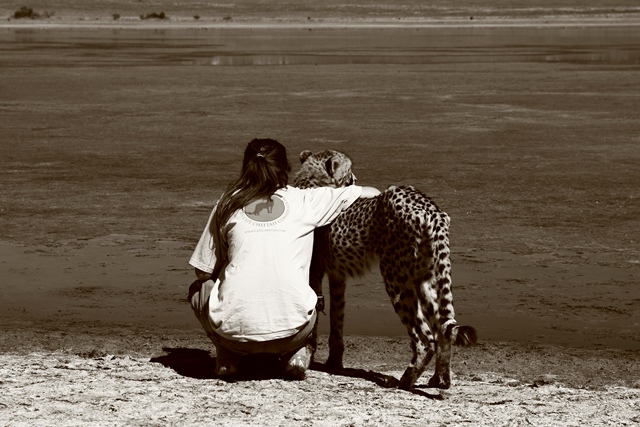Saving wildlife involves protecting them from the dangers which threaten their existence; but you don’t need to become an ecologist or game ranger to help. You can do it from the comfort of your own home. It is important to realise that saving animals means protecting their habitat – which means helping the environment.
The race against extinction is one we can all join. It is one we must join. We share this planet and depend on it, and on one another, to survive. Ultimately saving wildlife will save the world and us as well. Here are a few ways you can make a difference.
1. Reduce, Reuse, Recycle
• Buy fewer pre-packaged goods
• Start a compost heap
• Save electricity
• Minimise the use of heating and air conditioning
• Donate old clothes, toys and books
• Share reading materials or opt for electronic versions
• Take your own bag when shopping
• Use old containers and jars for storage or art projects
• Implement a recycling programme at home, school or work
• Do not litter – it endangers wildlife and harms the environment
2. Pets
Stray, abandoned or escaped pets pose a threat to endemic wildlife by encroaching on their habitat, competing for food, preying on them and spreading diseases. Prevent this by:
• Neutering or spaying cats and dogs
• Taking abandoned pets to an animal shelter
• Keeping exotic birds and reptiles in a safe space to prevent escape
• Give away aquarium fish instead of flushing them down the toilet
• Before buying saltwater fish find out where they have been sourced from and how they were collected. The capture of saltwater fish is extremely destructive of reefs and involves the use of sodium cyanide and dynamite. Only a few end up in stores, while the rest die and habitats are destroyed for any fish that remain.
3. Wildlife Rehabilitation
Rescued wild animals are rehabilitated for release into the wild, or used for breeding programmes to increase or save a species. Animals that cannot be released or bred are used to raise awareness. You can help by:
• Visiting a wildlife centre, zoo, national park or game reserve
• Joining a volunteer programme
4. Ecotourism
The establishment of national parks and game reserves has provided a safe haven for threatened wildlife, and helps raise funds and awareness for conservation. You can help by visiting these, but when you do make sure you respect the animals and their home.
• Use binoculars so you don’t get too close, otherwise you may disrupt parents caring for their young, as well as hunting and feeding habits.
• Stay on designated roads. Meandering off-course disrupts animals and destroys habitat. Many parks and reserves have hides and observation posts where you can view wildlife in peace.
• Be quiet, move slowly and stay in your vehicle.
5. Save Water
All living things need water, including us. Water sources are being depleted due to pollution and wasted due to negligence.
• Wash a full load of dishes or clothes – washing small loads wastes water and electricity
• Turn water off while washing dishes, cars or brushing your teeth
• Fix dripping or leaking taps, pipes and hoses
• Water your garden in the early morning or evening, not in in the middle of the day nor when it is windy
• Place a layer of mulch around trees and plants – this will help them retain water for longer
• Install gutters to collect water from your roof – use it to water your garden
• Take a shower instead of a bath
6. Get Involved
Besides volunteering at zoos, parks, reserves and centres, there are many other ways of protecting the environment, thus reducing pollution and protecting habitats and their indigenous wildlife.
• Join clean ups for beaches, roads and parks
• Plant indigenous trees
• Take public transport, walk, cycle or organise car pools
7. Community Integration
Educating and involving the community in their environment and its wildlife will make their protection meaningful and prevent human-wildlife conflict.
• Educate the community about the importance of wildlife
• Employ locals at parks, reserves and zoos
• Organise educational trips for schools, charities and local businesses
8. Funds
Visiting a national park, reserve, zoo or centre is already a contribution to wildlife and their protection. Here are more ways you can help:
• Donate
• Join conservation groups. They usually ask a joining fee or charge an annual subscription, which funds their work.
• Approach companies and businesses and ask them to get involved by providing funds, raising awareness and adding their name to the cause.
• Start a crowd-funding project
9. Spread the Word
It is the digital age, so make sure you inform and enlighten those around you about what is happening to wildlife.
• Create a website, forum or blog
• Social media – share links, pictures, facts and information
• Talk to people around you at home, in school or at work
10. Stay Informed
The world is constantly changing, especially today with the onset and increase of technology. Make sure you stay up to date and in the know, in order to be aware of new threats, as well as new possibilities:
• Read the news
• Read scientific journals and articles
• Join and follow reputable social media accounts
• Attend workshops, conferences and meetings
• Talk to the community
There is no more excuse. You can start saving wildlife today by implementing just one of these suggestions. Each fresh start and extra person is a step in the right direction and will make it easier and more encouraging to do the rest, helping us work together to save wildlife.
Originally published on Best Safari
